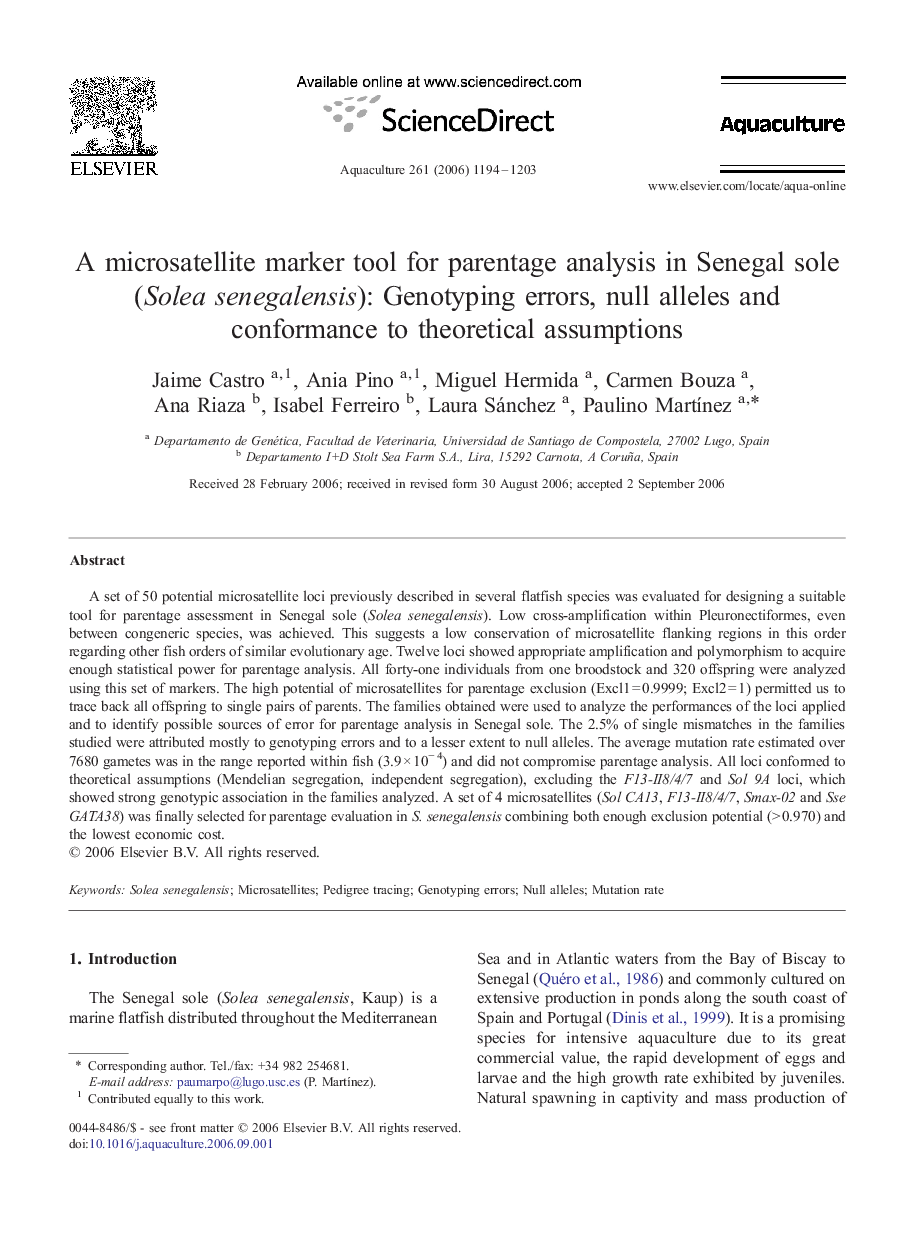| Article ID | Journal | Published Year | Pages | File Type |
|---|---|---|---|---|
| 2425507 | Aquaculture | 2006 | 10 Pages |
A set of 50 potential microsatellite loci previously described in several flatfish species was evaluated for designing a suitable tool for parentage assessment in Senegal sole (Solea senegalensis). Low cross-amplification within Pleuronectiformes, even between congeneric species, was achieved. This suggests a low conservation of microsatellite flanking regions in this order regarding other fish orders of similar evolutionary age. Twelve loci showed appropriate amplification and polymorphism to acquire enough statistical power for parentage analysis. All forty-one individuals from one broodstock and 320 offspring were analyzed using this set of markers. The high potential of microsatellites for parentage exclusion (Excl1 = 0.9999; Excl2 = 1) permitted us to trace back all offspring to single pairs of parents. The families obtained were used to analyze the performances of the loci applied and to identify possible sources of error for parentage analysis in Senegal sole. The 2.5% of single mismatches in the families studied were attributed mostly to genotyping errors and to a lesser extent to null alleles. The average mutation rate estimated over 7680 gametes was in the range reported within fish (3.9 × 10− 4) and did not compromise parentage analysis. All loci conformed to theoretical assumptions (Mendelian segregation, independent segregation), excluding the F13-II8/4/7 and Sol 9A loci, which showed strong genotypic association in the families analyzed. A set of 4 microsatellites (Sol CA13, F13-II8/4/7, Smax-02 and Sse GATA38) was finally selected for parentage evaluation in S. senegalensis combining both enough exclusion potential (> 0.970) and the lowest economic cost.
